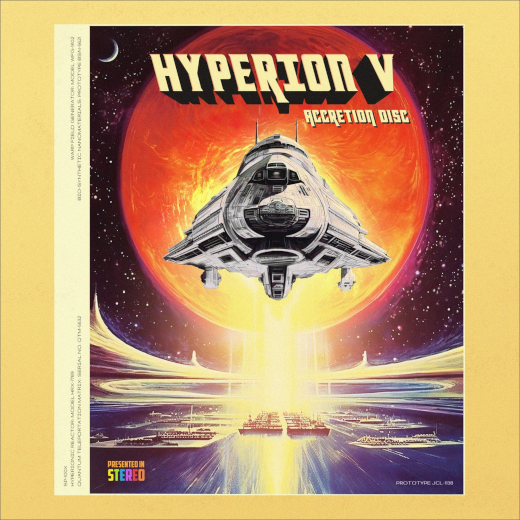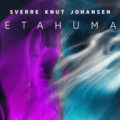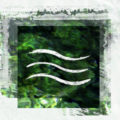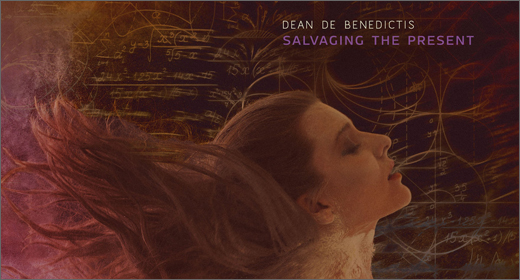This is not made for rest and possible sleep, the engagingly simple sound has an illusion of complexity and is interesting to take in because the territory is completely alien even to most of the other popular space music and mechanically synthesized soundscapes.

Concentrations of antimatter in the accessible universe
This album can inspire dancing to the funky beat in places, within the rapture of the mostly wordless mysterious absolute. The region between the Earth and Mercury seems alight with an unearthly glare, as though the very heart of the sun has burst and hurled part of its flaming mass outward into space, but I should not give away the ending. Forget I said that. Hyperion V (the V is pronounced “five”) is Ben Cox, Thomas Park and Plexus. To be sure, this is not ordinary dance music, but motion there is, and there are elements of IDM techniques in places. Also, at the other extreme, this is not made for rest and possible sleep, the engagingly simple sound has an illusion of complexity and is interesting to take in because the territory is completely alien even to most of the other popular space music and mechanically synthesized soundscapes.
I have an old space flyer, which we took beyond the heaviside layer six years ago, and I believe it is ready for action. We’re going to look for clues to find the extraterrestrial invaders this afternoon. Far out in the blackness of space, Cox, Park and Plexus are captives in the invader’s giant ship. My urgency is clear.
Astasis is an inability to stand, walk or even sit without assistance due to a disruption of muscle coordination. Take your time adjusting to the gravity itself and learning to move in apparent chaos, “Astasis” (4:26). Surface gravity is measured in units of acceleration, an object with twice the mass produces twice as much force. The geometric dilution corresponding to point-source radiation seems to lead into traditional three-dimensional space. The contrast between the flaunting colors and the finished artistry that lingers beneath, combines with the gravitational acceleration experienced at its surface at the equator, including the effects of rotation. “Surface Gravity” (4:06) in my opinion is not really for dancing with two appendages (legs), it is more of an energized multipodic shuffle, a very engaging and odd range of instrumental sounds, contained within a walking pace that brings some engaging challenges with shifting complexities.
Lagrange points are used by spacecraft to reduce the fuel consumption needed to remain in one continuous position, balancing the opposing gravitational pulls from two neighboring bodies at once. “Lagrangian Point” (4:08) deploys simulated congas defining a percussion platform with curious moving objects. Binary stars that are both visual and spectroscopic binaries are rare and are a valuable source of information, the spectral lines in the light emitted from each star shifts first towards the blue, then towards the red, as each moves first towards us, and then away from us, during its motion about their common center of mass. Usually evidence of a binary star comes from the Doppler effect on its emitted light. “Spectroscopic Binary” (4:37) is a lub dub dance with lots of hip pauses. “Baryogenesis” (5:49) contains the sounds of trapezoid drums and fragmented voices in the mix, all suspended by a bumpin’ bass beat keeping the steady slow flow mojo on the go. The process of Baryogenesis is often followed by primordial nucleosynthesis, when atomic nuclei begin to form, building on the imbalance of matter (baryons) and antimatter (antibaryons) in the observed universe. It is generally assumed that there is no experiential evidence of any significant concentrations of antimatter in the accessible universe, so far. Hang on, and look out.
Collisions of planetesimals over millions of years ::
Any astronomical object that is not an individual star or Solar System object (such as Sun, Moon, planet, comet, etc.) is a “Deep Sky Object” (4:44) and a cymbal’s pulse comes and goes. Some of these objects are almost bright enough to find and see with simple binoculars and small telescopes. Now a space-age woman’s voice is leading the way, “Oumuamua” (4:23) and soon transitions into a busy animated shuffling beat, energetic and space-sassy. I hear lots of big science sounds with a simple plausibly comic groove contrasting with the ancient forms of solo vocal human music. Keeping it all together, “Synchronous Orbit” (5:02) suggests that we are entering bigger rooms, with a wider view and generally feels more open than we have ever felt before.
The radiance of a night relieved by a single star is all about them as Cox, Park and Plexus move noiselessly away. The gigantic spaceship that had been their brief prison is upon their right; beyond and at the left is where their smaller ship just launched—Hyperion V could be heading home after all this time.
Protoplanets are built up through the collisions of planetesimals over millions of years. Imagine a large body of matter in orbit around the sun or a star and thought to be developing into a planet. Now try to imagine many moon-sized planet embryos, or maybe imagine a singular large planetary embryo, this is the “Protoplanet” (4:38), and it makes me want to bust out with some new moves because of that easy-going funky bass line. Somewhere there are human voices within the melodics, what we hear are buried fragments and shadows of terrestrials talking. I could be wrong. The voices might not be human.
Gravitation plays a role in general relativity, in defining the spacetime in which events take place. Gravitational interactions are mediated by an as yet undiscovered elementary particle, dubbed the graviton. “Graviton” (3:15) becomes a sly dance ghost portrait in granular funk, the guitar solo blows my mind (or could that possibly be a guitar?) the layers of rhythmic forms…no words. Well, this one really got to me.
Behold next a variable star that can undergo unpredictable dramatic increases in brightness for a few minutes, known as the “Flare Star” (5:24). This track has some unusual wailing keyboard jams. Most flare stars are dim intrinsically faint red dwarfs. This part of the movie takes place in the sky. Somehow midway through the track the percussion kicks in from a new direction, I call it energized dance relaxation. Tough gruff beats keep the flow pulsing forward, and just dig the combustible keyboard instrumentals, displaying awesome bursts of mashed dexterous power!
Now for the cliffhanger ending, “Coronal Mass Ejection” (6:32), Wait, are we going backwards now? Here the feeling is dramatic and dark, perhaps to leave us wondering and lost in new territory. There are legends. If a CME enters interplanetary space, it is referred to as an interplanetary coronal mass ejection (ICME). ICMEs are feared to be capable of reaching and colliding with Earth’s magnetosphere, where they can cause geomagnetic storms, aurorae, and in rare cases physical damage to electrical power grids. The largest recorded geomagnetic perturbation, resulting presumably from a CME, was the solar storm of 1859, that was also known as the Carrington Event. This unfortunate electrical disruption disabled parts of the newly created United States telegraph network, starting fires and terminally zapping some telegraph operators.
Returning from a new world ::
Hyperion V is high in the air; the thick clouds that surround this new world are miles from its surface, the things of the world that awaits are tiny and blurred. Cox, Park and Plexus are orbiting, in very fact, returning from a new world; their feet have just walked where never a human has stood; their eyes have gazed upon a place that no mortal eyes have ever visioned.
Accretion Disc is available through streaming, and as high resolution studio master downloads. There will be no physical CD or vinyl forms, at least according to the current release plan. This is a journey through some new ambient electronic territory, including some actual “physical” instruments within the granular digital mixture. And when the great ship comes again, it gracefully hovers above the observatory to settle slowly down, a scene whose blazing beauty of color renders many into frozen silence. Hyperion V is from a city of the stars, and to my ear’s eyes it seems as if all the brilliance of the heavens has been gathered for its construction. The great tower of steel and silicone rises up monstrously into the sky. It is whole, and the pallid lights within stir and flicker, crowned with a shimmering darkness.
Accretion Disc is available on Spotted Peccary. [Bandcamp]




















![Luke’s Anger :: Ceiling Walker EP (Love Love) — [concise]](https://igloomag.com/wp/wp-content/uploads/2025/04/lukes-anger-ceiling-walker-vinyl_feat-75x75.jpg)

![Ndorfik & madebyitself :: Solos EP (People Can Listen) — [concise]](https://igloomag.com/wp/wp-content/uploads/2025/04/ndorfik-madebyitself-solos_feat-75x75.jpg)



